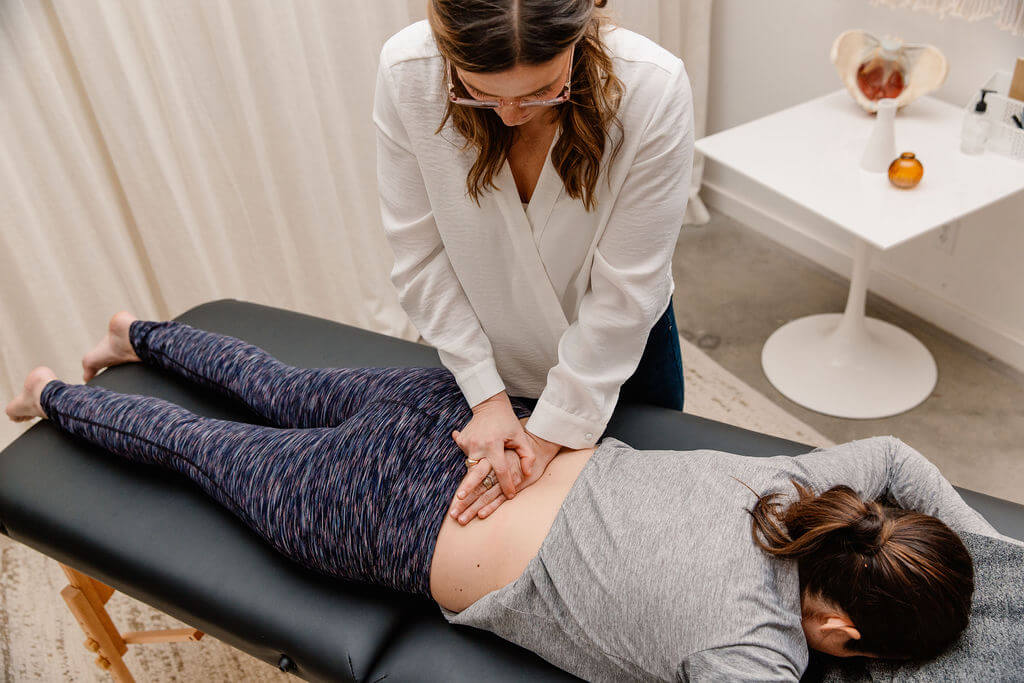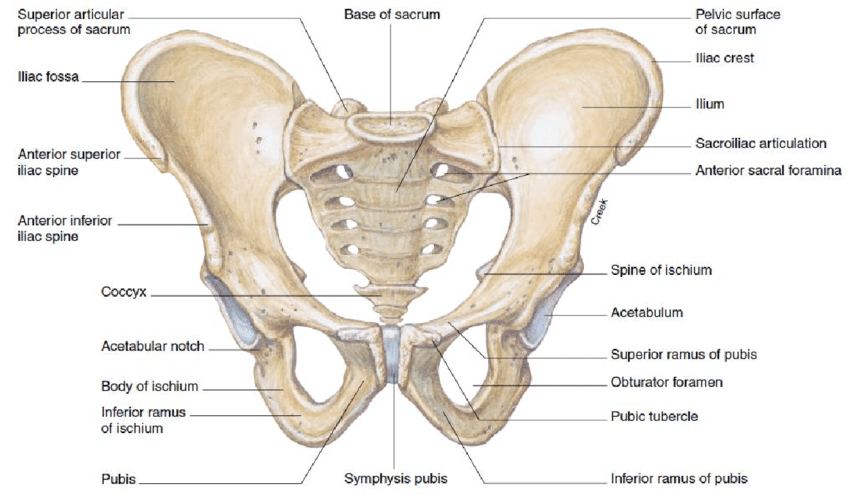
What is Pelvic Girdle Pain (PGP) + 3 products to help treat it
What is Pelvic Girdle Pain?
Your pelvic girdle may be the source of a bunch of different kinds of pelvic pain! But how can that be? How can one section of your pelvis lead to so many different kinds of pain? Well, because it isn’t just one section – the pelvic girdle is made up of three bones that are fused together: the ilium, ischium, and pubis.
They fuse together in the front, or anteriorly, between the left and right pubic bones, by the pubic symphysis. Posteriorly, or in the back, they fuse between the left and right ilia and the sacrum. (Need a different visual? Check out this reel I recorded to help!)
The pelvic girdle’s purpose is to help support our body’s locomotor system (the skeleton, ligaments, tendons, muscles, all of that fun stuff.) A lot of your muscles, ligaments and tendons also attach at the pelvic girdle, so there are plenty of reasons that you have pelvic girdle pain!

What causes Pelvic Girdle Pain?
We see pelvic girdle pain pretty often in uterus-owners that are pregnant. As the baby grows, the extra weight that you’re carrying around causes stress on your pelvic girdle and it can change the way you walk, sit, and stand, which will put more pressure on it. The hormones associated with pregnancy also cause a lot of your ligaments and muscles to loosen up – which directly affects how your pelvic girdle moves.
Some pain is caused by hypermobility of the joints that make up the pelvic girdle. If you’ve ever had back or pelvic pain or injuries to either of these areas, those joints may have more motion than they should. In some instances, these joints may be sitting in an uneven position causing your muscles to pull differently.
An example I use for joints that are caddywhompus is a horse’s head with their corresponding reigns. Your bones are the reins and head but your muscles are the horse’s body. Imagine trying to get a horse to walk straight with its head turned all the way to the right. It just wouldn’t happen. The horse would keep turning in circles; the same applies here.
What are the treatment options?
So we’ve uncovered what may be causing your pain, now what can we do to treat it? It starts with you and making small adjustments to your movement.
Because pelvic girdle pain is related to how your pelvic bones, joints and muscles interact in a dynamic way, small changes can have a big effect.
- Smaller Steps: One simple place to start is changing your step length. By slowing down your pace and taking slightly shorter steps, at least initially, some of the pressure will be taken off of all of these structures.
The concept here is – if you want a bruise to heal, you need to stop punching it. Take smaller steps for a few days or weeks and that should help things calm down so that you can slowly return to your pre-pain walking (gait) speed.
- Relieve your Pelvis of Pressure: This can be accomplished by sitting in a semi reclined position; you can accomplish this by laying completely flat with a few pillows under your knees OR you can elevate your pelvis so it is a bit higher than your heart. I like to put my legs up on an ottoman and then put the Dame Pillo under my pelvis.
- Stop Heavy Lifting: For individuals who are pregnant or who have a history of pelvic girdle pain, you’ve probably heard this tip before. The issue is not always the weight of the load but more your body mechanics while completing the lift or the fact that you are doing several repetitions.Before you just stop all lifting, first ask yourself if this motion reproduces the pain. If it does, then do not complete the lift. If it doesn’t, then make sure you are scanning your body to ensure proper body mechanics and muscle engagement.
Products for treating your Pelvic Girdle Pain
- Dame Pillo: Pelvic girdle pain is greatly treated by laying down with your pelvis elevated over your heart so this is wonderful to assist with it. folks with prolapse so pressure heaviness and pain in the pelvic region and even pregnant folks if they can tolerate laying on their back will like this.
Use code Laura5 at checkout for 5% off. - Support Belt: A lot of times people need stability for ligament laxity through this area whether you are pregnant or not. This belt can be worn two different ways to get closure through the SI joints OR the pubic symphysis

- Massage Ball: Check out my instagram reel where I explain how these products work and their benefits.
How you can work with me
Pelvic girdle pain persisting? I offer a FREE 20-minute discovery call. Let’s get to the bottom of it. It doesn’t matter where you’re located in the world, I offer virtual appointments as well. And if you’re in the Minnesota area, I’d love to see you in person!
One of my main goals as a pelvic floor physical therapist is to help you find out what is causing you pain, and treating it.
Looking for more resources? Check out the blogs linked below. I’m also featuring pelvic girdle pain right now on instagram and sharing ALL the info! You can also find more on my Youtube Channel.
More content you may like:
Some of the links on this page may be affiliate links. Laura Meihofer’s LLC is a participant in the Amazon Associates Program and others, as an affiliate advertising program designed to provide a means for sites to earn advertising fees by linking to products Laura organically uses and trusts. If you purchase a product through an affiliate link, your cost will be the same, but Laura will automatically receive a small commission. Your support is greatly appreciated and helps her spread her message!








Sorry, the comment form is closed at this time.